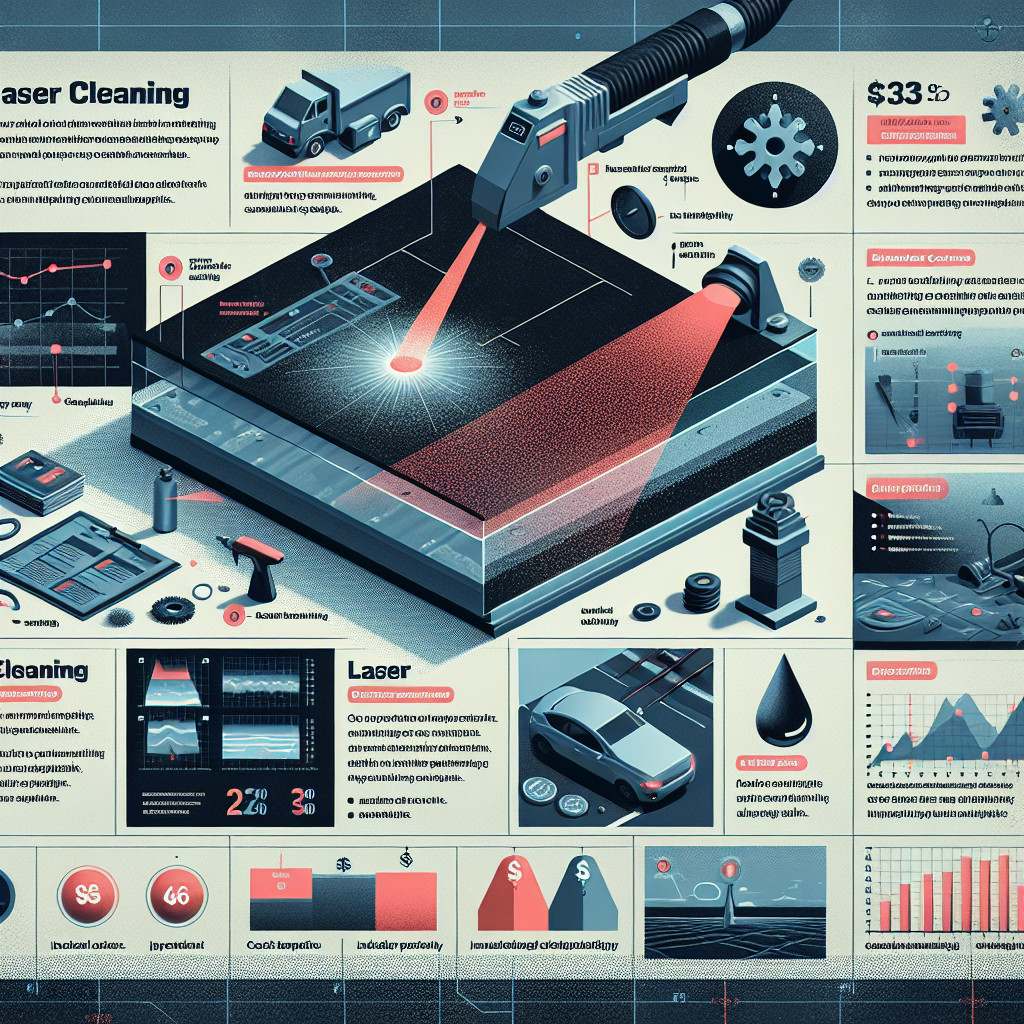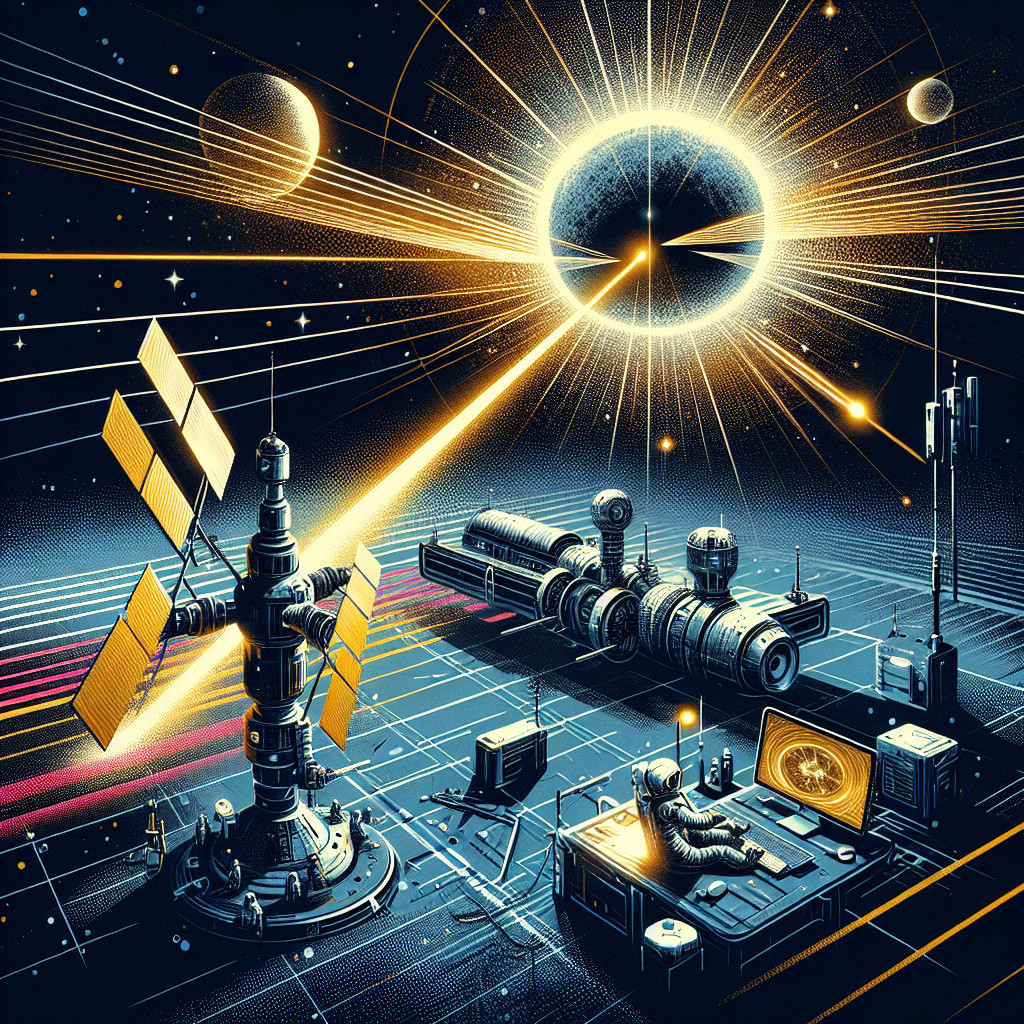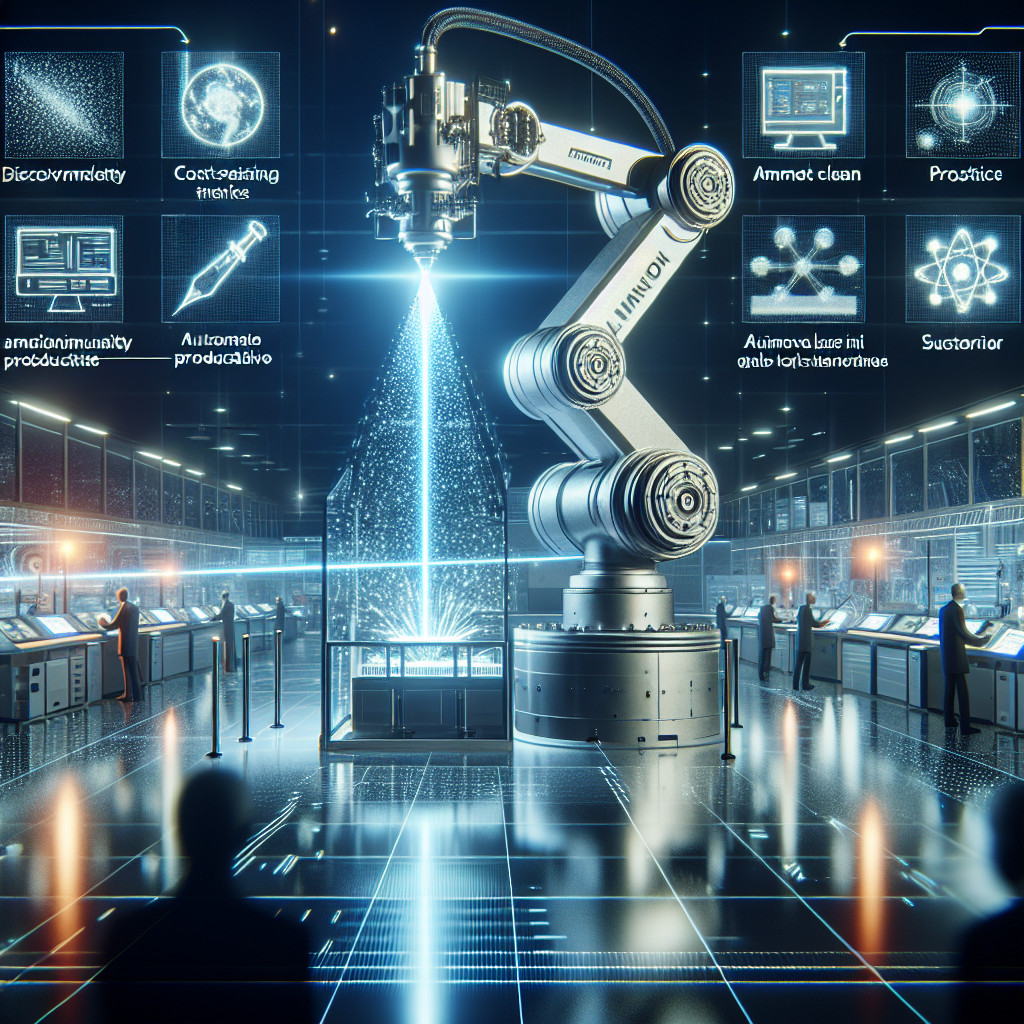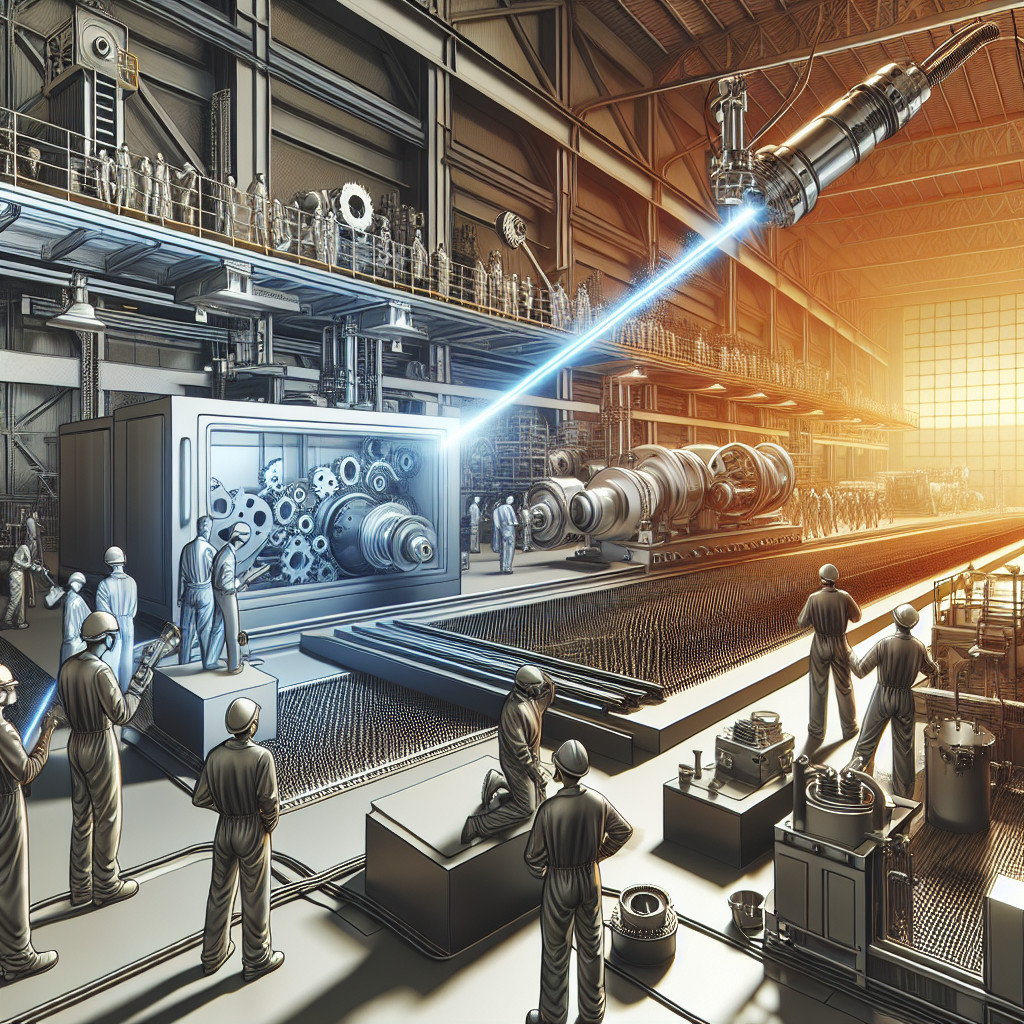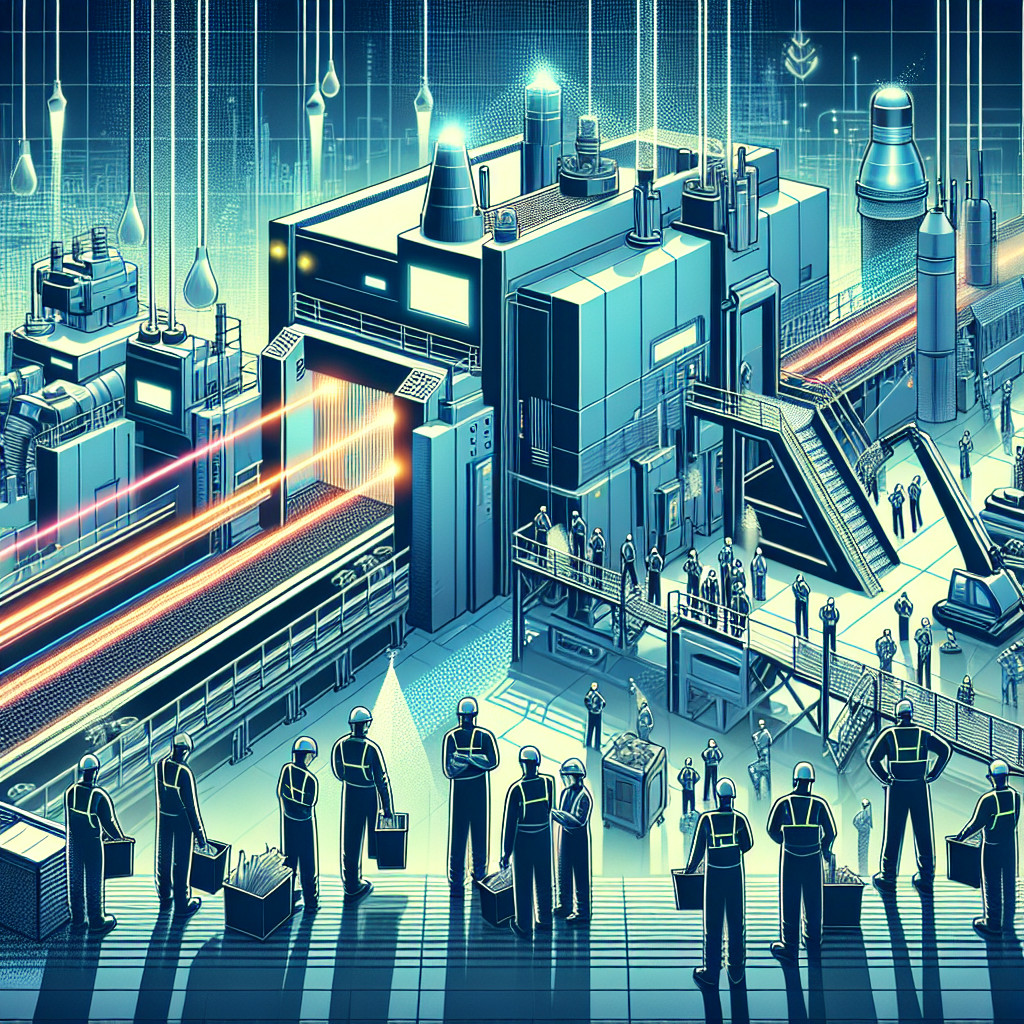- Introduction to laser cleaning in the textile industry
- Benefits of laser cleaning in textile manufacturing
- Comparison of traditional cleaning methods with laser cleaning
- Applications of laser cleaning in different textile processes
- Environmental impact of laser cleaning in textile industry
- Future trends in laser cleaning for textile manufacturing
- Integration of laser cleaning into existing textile production processes
- Case studies of cost savings from implementing laser cleaning in textiles
Introduction to laser cleaning in the textile industry
In recent years, laser cleaning has emerged as a revolutionary technology in the textile industry. This innovative method offers a more efficient and environmentally friendly alternative to traditional cleaning methods. Laser cleaning uses high-intensity laser beams to remove contaminants and dirt from textile surfaces without the need for water or chemicals. This process is not only more sustainable but also more cost-effective in the long run.
Advantages of laser cleaning in the textile industry:
– Environmentally friendly: Laser cleaning eliminates the need for harmful chemicals and reduces water consumption, making it a more sustainable option for textile manufacturers.
– Efficient: Laser cleaning is a fast and effective method for removing dirt and contaminants from textile surfaces, saving time and labor costs.
– Precision: Laser cleaning allows for precise control over the cleaning process, ensuring that only the targeted areas are cleaned without damaging the fabric.
– Cost-effective: While the initial investment in laser cleaning technology may be higher, the long-term savings on water, chemicals, and labor costs make it a cost-effective solution for textile manufacturers.
Laser cleaning technology is versatile and can be used on a wide range of textile materials, including cotton, wool, silk, and synthetic fibers. It is particularly effective for removing stains, oils, and other contaminants from fabrics without causing damage or discoloration. Additionally, laser cleaning can be used for spot cleaning, surface preparation, and restoration of vintage textiles.
Overall, laser cleaning offers numerous benefits for the textile industry, including improved sustainability, efficiency, and cost-effectiveness. As more manufacturers adopt this innovative technology, we can expect to see a shift towards cleaner and more environmentally friendly textile production processes.
#laser #cleaning #textile #industry
frazy kluczowe:
– Laser cleaning technology in the textile industry
– Sustainable cleaning methods for textiles
– Benefits of laser cleaning for fabric manufacturers
Benefits of laser cleaning in textile manufacturing
1. Efficiency: Laser cleaning is a highly efficient method that can remove dirt, stains, and other contaminants from textile surfaces with precision and speed. This results in faster production times and reduced downtime for cleaning and maintenance.
2. Precision: Laser cleaning allows for precise control over the cleaning process, ensuring that only the targeted areas are treated. This minimizes the risk of damage to delicate textiles and reduces the need for manual labor.
3. Environmentally friendly: Unlike traditional cleaning methods that use harsh chemicals and produce waste, laser cleaning is a clean and environmentally friendly process. It does not generate any harmful by-products or emissions, making it a sustainable choice for textile manufacturers.
4. Cost-effective: While the initial investment in laser cleaning equipment may be higher than traditional cleaning methods, the long-term cost savings are significant. Laser cleaning requires less maintenance, fewer consumables, and lower energy consumption, resulting in overall cost reductions for textile manufacturers.
5. Versatility: Laser cleaning can be used on a wide range of textile materials, including fabrics, yarns, and finished products. It is suitable for various applications, such as removing oils, dyes, and coatings, as well as preparing surfaces for printing or bonding.
6. Quality: Laser cleaning produces consistent and high-quality results, ensuring that textiles meet the strictest standards for cleanliness and appearance. This can lead to improved product performance, customer satisfaction, and brand reputation.
Overall, laser cleaning offers numerous benefits for textile manufacturers, including increased efficiency, precision, environmental sustainability, cost savings, versatility, and quality. By incorporating this innovative technology into their production processes, textile manufacturers can stay ahead of the competition and meet the demands of the modern market.
#laser cleaning #textile manufacturing #efficiency #precision #environmentally friendly #cost-effective #versatility #quality
frazy kluczowe:
– laser cleaning in textile manufacturing benefits
– advantages of laser cleaning in textile industry
– why use laser cleaning in textile production
– laser cleaning technology for textiles
– benefits of laser cleaning for textile manufacturers
Comparison of traditional cleaning methods with laser cleaning
Comparison of traditional cleaning methods with laser cleaning
Cleaning is an essential part of maintenance in various industries, from manufacturing to healthcare. Over the years, traditional cleaning methods have been used to remove dirt, grime, and contaminants from surfaces. However, with advancements in technology, laser cleaning has emerged as a more efficient and environmentally friendly alternative. In this article, we will compare traditional cleaning methods with laser cleaning to determine their advantages and disadvantages.
Traditional Cleaning Methods
- Chemical cleaning: This method involves the use of cleaning agents such as detergents, solvents, and acids to dissolve and remove dirt and contaminants from surfaces.
- Mechanical cleaning: Mechanical methods, such as scrubbing, brushing, and scraping, are used to physically remove dirt and grime from surfaces.
- Steam cleaning: Steam is used to loosen dirt and grime, which can then be wiped away with a cloth or vacuumed up.
- Ultrasonic cleaning: This method uses high-frequency sound waves to create bubbles in a cleaning solution, which then implode and remove dirt from surfaces.
Laser Cleaning
- Non-contact cleaning: Laser cleaning does not require physical contact with the surface, reducing the risk of damage or contamination.
- No chemicals or abrasives: Laser cleaning is a dry process that does not require the use of chemicals or abrasives, making it environmentally friendly.
- Precision cleaning: Laser cleaning can be controlled with high precision, allowing for selective removal of contaminants without damaging the underlying surface.
- Efficiency: Laser cleaning is faster and more efficient than traditional methods, reducing downtime and increasing productivity.
Comparison
While traditional cleaning methods have been effective for many years, they often have drawbacks such as the use of chemicals, abrasives, and physical contact with surfaces. Laser cleaning offers a more advanced and sustainable solution that is becoming increasingly popular in various industries.
Overall, the comparison between traditional cleaning methods and laser cleaning shows that the latter is a superior option in terms of efficiency, precision, and environmental impact. As technology continues to advance, laser cleaning is likely to become the preferred method for cleaning surfaces in a wide range of applications.
Applications of laser cleaning in different textile processes
Applications of laser cleaning in different textile processes
Laser cleaning technology has revolutionized the textile industry by providing a more efficient and environmentally friendly way to clean various textile materials. This innovative method uses high-powered lasers to remove contaminants, stains, and dirt from fabrics without causing damage to the material itself. Let’s explore some of the key applications of laser cleaning in different textile processes:
1. Fabric Restoration:
- Laser cleaning is commonly used in fabric restoration processes to remove dirt, grime, and stains from vintage textiles without causing any damage to the delicate fibers.
- It can also be used to remove unwanted dyes or pigments from fabrics, allowing for the restoration of faded or discolored textiles.
2. Textile Manufacturing:
- Laser cleaning is used in textile manufacturing processes to remove excess dye, sizing agents, or other chemicals from fabrics before they are dyed or finished.
- It can also be used to clean textile machinery and equipment, ensuring optimal performance and prolonging the lifespan of the equipment.
3. Upholstery Cleaning:
- Laser cleaning is an effective method for removing dirt, stains, and odors from upholstery fabrics without the need for harsh chemicals or water.
- It can be used to clean a variety of upholstery materials, including leather, suede, and velvet, without causing any damage to the fabric.
Overall, laser cleaning technology offers a versatile and efficient solution for cleaning textiles in a wide range of applications. Its ability to remove contaminants without damaging the material makes it an ideal choice for industries looking to improve their cleaning processes while reducing their environmental impact.
Keywords:
laser cleaning, textile industry, fabric restoration, textile manufacturing, upholstery cleaning
Long-tail phrases:
applications of laser cleaning in textile processes, benefits of laser cleaning in fabric restoration, laser cleaning technology in textile manufacturing, advantages of laser cleaning in upholstery cleaning
#laser #cleaning #textile #fabric #restoration #manufacturing #upholstery #technology #environmentallyfriendly #efficiency
#applications #benefits #advantages #innovative #sustainable #versatile #efficient #environmentalimpact
Environmental impact of laser cleaning in textile industry
One of the main environmental benefits of laser cleaning is its ability to reduce the use of harmful chemicals in the textile industry. Traditional cleaning methods often rely on harsh chemicals that can be harmful to both the environment and human health. Laser cleaning, on the other hand, uses a focused beam of light to remove contaminants without the need for chemicals, making it a much more environmentally friendly option.
Additionally, laser cleaning produces less waste than traditional cleaning methods. Because it does not require the use of chemicals or water, there is less waste produced during the cleaning process. This can help reduce the environmental impact of textile production and contribute to a more sustainable industry overall.
However, it is important to note that laser cleaning also has some environmental drawbacks. One of the main concerns is the energy consumption associated with laser technology. While laser cleaning is more efficient than traditional methods in terms of cleaning time and resources, it still requires a significant amount of energy to operate. This energy consumption can contribute to greenhouse gas emissions and other environmental issues.
Another potential environmental impact of laser cleaning is the generation of hazardous waste. While laser cleaning itself does not produce waste, the materials that are removed from textiles during the cleaning process can be hazardous if not properly disposed of. It is important for textile manufacturers to have proper waste management practices in place to ensure that any hazardous materials are handled safely and responsibly.
In conclusion, laser cleaning offers many environmental benefits for the textile industry, including reduced chemical use and waste production. However, it is important for manufacturers to consider the energy consumption and potential waste generation associated with this technology. By implementing proper waste management practices and investing in renewable energy sources, the environmental impact of laser cleaning can be minimized.
#environment #laser cleaning #textile industry #sustainability #waste management
frazy kluczowe:
– environmental impact of laser cleaning
– laser cleaning in textile industry
– benefits of laser cleaning
– waste reduction in textile industry
– energy consumption in laser cleaning
Future trends in laser cleaning for textile manufacturing
Advantages of laser cleaning in textile manufacturing:
– Environmentally friendly: Laser cleaning eliminates the need for harmful chemicals, reducing the environmental impact of textile production.
– Efficient: Laser cleaning is a fast and precise method, allowing for quick and thorough cleaning of textile surfaces.
– Cost-effective: While the initial investment in laser cleaning technology may be higher, the long-term savings on cleaning materials and labor costs make it a cost-effective solution for textile manufacturers.
Future trends in laser cleaning technology:
– Integration with automation: As automation becomes more prevalent in textile manufacturing, laser cleaning technology is expected to be integrated into automated production lines.
– Development of specialized lasers: Manufacturers are working on developing lasers specifically designed for cleaning textiles, with optimized parameters for different types of fabrics.
– Enhanced safety features: Future laser cleaning systems will likely include advanced safety features to protect workers from potential hazards.
Overall, the future of laser cleaning in textile manufacturing looks bright, with continued advancements in technology and a growing emphasis on sustainability driving its adoption in the industry.
#laser #cleaning #textile #manufacturing #sustainability #automation #technology
frazy kluczowe:
– Advantages of laser cleaning in textile manufacturing
– Integration with automation in laser cleaning
– Specialized lasers for textile cleaning
– Safety features in laser cleaning technology
Integration of laser cleaning into existing textile production processes
🌟 Benefits of integrating laser cleaning into textile production processes 🌟
– Reduced water and chemical usage: Laser cleaning eliminates the need for water and chemicals typically used in traditional cleaning methods, making it a more sustainable option.
– Improved efficiency: Laser cleaning is a fast and precise process, allowing for quicker turnaround times in production.
– Enhanced quality: Laser cleaning can remove even the smallest particles from textile surfaces, resulting in higher quality finished products.
– Cost savings: By reducing the need for water, chemicals, and manual labor, laser cleaning can lead to significant cost savings for textile manufacturers.
🔧 How laser cleaning can be integrated into existing textile production processes 🔧
1. Retrofitting existing machinery: Laser cleaning systems can be integrated into existing textile production equipment, such as weaving or dyeing machines.
2. Implementing in-line cleaning stations: Textile manufacturers can set up in-line laser cleaning stations to remove contaminants from fabrics as they move through the production line.
3. Training employees: Proper training is essential to ensure that employees understand how to operate and maintain laser cleaning equipment effectively.
Challenges and considerations for integrating laser cleaning into textile production processes
– Initial investment costs: While laser cleaning technology can lead to long-term cost savings, the initial investment in equipment and training can be significant.
– Safety concerns: Laser beams can be hazardous if not used properly, so it is crucial to implement strict safety protocols and provide adequate training for employees.
– Compatibility with existing processes: Textile manufacturers must ensure that laser cleaning technology is compatible with their existing production processes and does not disrupt workflow.
Conclusion
Overall, the offers numerous benefits, including improved efficiency, sustainability, and cost savings. By carefully considering the challenges and implementing proper safety measures, textile manufacturers can successfully incorporate laser cleaning technology into their operations.
#laser #cleaning #textile #production #efficiency #sustainability #costsavings
#environmentallyfriendly #quality #safetyprotocols #training #compatibility #workflow #innovation #technology #integration #manufacturing #sustainableproduction #textileindustry #laserbeam #contaminantsremoval #precisioncleaning #noncontactcleaning #fastcleaning #highenergylaserbeam #weavingmachines #dyeingmachines #inlinecleaningstations #retrofittingmachinery #employeesafety #hazardousmaterials #safetytraining #equipmentmaintenance #challengesandconsiderations #longterminvestments #sustainableoperations #improvedprocesses #highqualityproducts #laserbeamtechnology #textilemanufacturers #productionefficiency #sustainabletextileproduction #costeffectiveness #innovativetechnologies #sustainablemanufacturing #environmentallyfriendlyproduction #sustainablepractices #sustainablebusinessmodels #sustainablefuture #sustainabledevelopment #sustainablegrowth #sustainableindustry #sustainableinnovation #sustainabletechnology #sustainableoperations #sustainablemanufacturingpractices #sustainableproductionmethods #sustainabletextileindustry #sustainabletextilemanufacturing #sustainabletextileproductionprocesses #sustainabletextileproductiontechniques #sustainabletextileproductionmethods #sustainabletextileproductionequipment #sustainabletextileproductiontechnology #sustainabletextileproductioninnovations #sustainabletextileproductiontrends #sustainabletextileproductionchallenges #sustainabletextileproductionopportunities #sustainabletextileproductionstrategies #sustainabletextileproductionbestpractices #sustainabletextileproductionguidelines #sustainabletextileproductionstandards #sustainabletextileproductioncertifications #sustainabletextileproductionrequirements #sustainabletextileproductioncompliance #sustainabletextileproductionregulations #sustainabletextileproductionpolicies #sustainabletextileproductioninitiatives #sustainabletextileproductionprojects #sustainabletextileproductioninvestments #sustainabletextileproductionpartnerships #sustainabletextileproductioncollaborations #sustainabletextileproductionnetworks #sustainabletextileproductioncommunities #sustainabletextileproductionassociations #sustainabletextileproductionorganizations #sustainabletextileproductioninstitutions #sustainabletextileproductionagencies #sustainabletextileproductionauthorities #sustainabletextileproductionexperts #sustainabletextileproductionconsultants #sustainabletextileproductionadvisors #sustainabletextileproductionprofessionals #sustainabletextileproductionleaders #sustainabletextileproductionmanagers #sustainabletextileproductiondirectors #sustainabletextileproductionexecutives #sustainabletextileproductionentrepreneurs #sustainabletextileproductioninnovators #sustainabletextileproductionpioneers #sustainabletextileproductionvisionaries #sustainabletextileproductiontrailblazers #sustainabletextileproductionchampions #sustainabletextileproductionheroes #sustainabletextileproductionlegends #sustainabletextileproductionicons #sustainabletextileproductionrolemodels #sustainabletextileproductioninspirations #sustainabletextileproductionmotivations #sustainabletextileproductionaspirations #sustainabletextileproductiongoals #sustainabletextileproductionobjectives #sustainabletextileproductionstrategies #sustainabletextileproductionplans #sustainabletextileproductionactions #sustainabletextileproductioninitiatives #sustainabletextileproductionprojects #sustainabletextileproductioninvestments #sustainabletextileproductionpartnerships #sustainabletextileproductioncollaborations #sustainabletextileproductionnetworks #sustainabletextileproductioncommunities #sustainabletextileproductionassociations #sustainabletextileproductionorganizations #sustainabletextileproductioninstitutions #sustainabletextileproductionagencies #sustainabletextileproductionauthorities #sustainabletextileproductionexperts #sustainabletextileproductionconsultants #sustainabletextileproductionadvisors #sustainabletextileproductionprofessionals #sustainabletextileproductionleaders #sustainabletextileproductionmanagers #sustainabletextileproductiondirectors #sustainabletextileproductionexecutives #sustainabletextileproductionentrepreneurs #sustainabletextileproductioninnovators #sustainabletextileproductionpioneers #sustainabletextileproductionvisionaries #sustainabletextileproductiontrailblazers #sustainabletextileproductionchampions #sustainabletextileproductionheroes #sustainabletextileproductionlegends #sustainabletextileproductionicons #sustainabletextileproductionrolemodels #sustainabletextileproductioninspirations #sustainabletextileproductionmotivations #sustainabletextileproductionaspirations #sustainabletextileproductiongoals #sustainabletextileproductionobjectives #sustainabletextileproductionstrategies #sustainabletextileproductionplans #sustainabletextileproductionactions #sustainabletextileproductioninitiatives #sustainabletextileproductionprojects #sustainabletextileproductioninvestments #sustainabletextileproductionpartnerships #sustainabletextileproductioncollaborations #sustainabletextileproductionnetworks #sustainabletextileproductioncommunities #sustainabletextileproductionassociations #sustainabletextileproductionorganizations #sustainabletextileproductioninstitutions #sustainabletextileproductionagencies #sustainabletextileproductionauthorities #sustainabletextileproductionexperts #sustainabletextileproductionconsultants #sustainabletextileproductionadvisors #sustainabletextileproductionprofessionals #sustainabletextileproductionleaders #sustainabletextileproductionmanagers #sustainabletextileproductiondirectors #sustainabletextileproductionexecutives #sustainabletextileproductionentrepreneurs #sustainabletextileproductioninnovators #sustainabletextileproductionpioneers #sustainabletextileproductionvisionaries #sustainabletextileproductiontrailblazers #sustainabletextileproductionchampions #sustainabletextileproductionheroes #sustainabletextileproductionlegends #sustainabletextileproductionicons #sustainabletextileproductionrolemodels #sustainabletextileproductioninspirations #sustainabletextileproductionmotivations #sustainabletextileproductionaspirations #sustainabletextileproductiongoals #sustainabletextileproductionobjectives #sustainabletextileproductionstrategies #sustainabletextileproductionplans #sustainabletextileproductionactions #sustainabletextileproductioninitiatives #sustainabletextileproductionprojects #sustainabletextileproductioninvestments #sustainabletextileproductionpartnerships #sustainabletextileproductioncollaborations #sustainabletextileproductionnetworks #sustainabletextileproductioncommunities #sustainabletextileproductionassociations #sustainabletextileproductionorganizations #sustainabletextileproductioninstitutions #sustainabletextileproductionagencies #sustainabletextileproductionauthorities #sustainabletextileproductionexperts #sustainabletextileproductionconsultants #sustainabletextileproductionadvisors #sustainabletextileproductionprofessionals #sustainabletextileproductionleaders #sustainabletextileproductionmanagers #sustainabletextileproductiondirectors #sustainabletextileproductionexecutives #sustainabletextileproductionentrepreneurs #sustainabletextileproductioninnovators #sustainabletextileproductionpioneers #sustainabletextileproductionvisionaries #sustainabletextileproductiontrailblazers #sustainabletextileproductionchampions #sustainabletextileproductionheroes #sustainabletextileproductionlegends #sustainabletextileproductionicons #sustainabletextileproductionrolemodels #sustainabletextileproductioninspirations #sustainabletextileproductionmotivations #sustainabletextileproductionaspirations #sustainabletextileproductiongoals #sustainabletextileproductionobjectives #sustainabletextileproductionstrategies #sustainabletextileproductionplans #sustainabletextileproductionactions #sustainabletextileproductioninitiatives #sustainabletextileproductionprojects #sustainabletextileproductioninvestments #sustainabletextileproductionpartnerships #sustainabletextileproductioncollaborations #sustainabletextileproductionnetworks #sustainabletextileproductioncommunities #sustainabletextileproductionassociations #sustainabletextileproductionorganizations #sustainabletextileproductioninstitutions #sustainabletextileproductionagencies #sustainabletextileproductionauthorities #sustainabletextileproductionexperts #sustainabletextileproductionconsultants #sustainabletextileproductionadvisors #sustainabletextileproductionprofessionals #sustainabletextileproductionleaders #sustainabletextileproductionmanagers #sustainabletextileproductiondirectors #sustainabletextileproductionexecutives #sustainabletextileproductionentrepreneurs #sustainabletextileproductioninnovators #sustainabletextileproductionpioneers #sustainabletextileproductionvisionaries #sustainabletextileproductiontrailblazers #sustainabletextileproductionchampions #sustainabletextileproductionheroes #sustainabletextileproductionlegends #sustainabletextileproductionicons #sustainabletextileproductionrolemodels #sustainabletextileproductioninspirations #sustainabletextileproductionmotivations #sustainabletextileproductionaspirations #sustainabletextileproductiongoals #sustainabletextileproductionobjectives #sustainabletextileproductionstrategies #sustainabletextileproductionplans #sustainabletextileproductionactions #sustainabletextileproductioninitiatives #sustainabletextileproductionprojects #sustainabletextileproductioninvestments #sustainabletextileproductionpartnerships #sustainabletextileproductioncollaborations #sustainabletextileproductionnetworks #sustainabletextileproductioncommunities #sustainabletextileproductionassociations #sustainabletextileproductionorganizations #sustainabletextileproductioninstitutions #sustainabletextileproductionagencies #sustainabletextileproductionauthorities #sustainabletextileproductionexperts #sustainabletextileproductionconsultants #sustainabletextileproductionadvisors #sustainabletextileproductionprofessionals #sustainabletextileproductionleaders #sustainabletextileproductionmanagers #sustainabletextileproductiondirectors #sustainabletextileproductionexecutives #sustainabletextileproductionentrepreneurs #sustainabletextileproductioninnovators #sustainabletextileproductionpioneers #sustainabletextileproductionvisionaries #sustainabletextileproductiontrailblazers #sustainabletextileproductionchampions #sustainabletextileproductionheroes #sustainabletextileproductionlegends #sustainabletextileproductionicons #sustainabletextileproductionrolemodels #sustainabletextileproductioninspirations #sustainabletextileproductionmotivations #sustainabletextileproductionaspirations #sustainabletextileproductiongoals #sustainabletextileproductionobjectives #sustainabletextileproductionstrategies #sustainabletextileproductionplans #sustainabletextileproductionactions #sustainabletextileproductioninitiatives #sustainabletextileproductionprojects #sustainabletextileproductioninvestments #sustainabletextileproductionpartnerships #sustainabletextileproductioncollaborations #sustainabletextileproductionnetworks #sustainabletextileproductioncommunities #sustainabletextileproductionassociations #sustainabletextileproductionorganizations #sustainabletextileproductioninstitutions #sustainabletextileproductionagencies #sustainabletextileproductionauthorities #sustainabletextileproductionexperts #sustainabletextileproductionconsultants #sustainabletextileproductionadvisors #sustainabletextileproductionprofessionals #sustainabletextileproductionleaders #sustainabletextileproductionmanagers #sustainabletextileproductiondirectors #sustainabletextileproductionexecutives #sustainabletextileproductionentrepreneurs #sustainabletextileproductioninnovators #sustainabletextileproductionpioneers #sustainabletextileproductionvisionaries #sustainabletextileproductiontrailblazers #sustainabletextileproductionchampions #sustainabletextileproductionheroes #sustainabletextileproductionlegends #sustainabletextileproductionicons #sustainabletextileproductionrolemodels #sustainabletextileproductioninspirations #sustainabletextileproductionmotivations #sustainabletextileproductionaspirations #sustainabletextileproductiongoals #sustainabletextileproductionobjectives #sustainabletextileproductionstrategies #sustainabletextileproductionplans #sustainabletextileproductionactions #sustainabletextileproductioninitiatives #sustainabletextileproductionprojects #sustainabletextileproductioninvestments #sustainabletextileproductionpartnerships #sustainabletextileproductioncollaborations #sustainabletextileproductionnetworks #sustainabletextileproductioncommunities #sustainabletextileproductionassociations #sustainabletextileproductionorganizations #sustainabletextileproductioninstitutions #sustainabletextileproductionagencies #sustainabletextileproductionauthorities #sustainabletextileproductionexperts #sustainabletextileproductionconsultants #sustainabletextileproductionadvisors #sustainabletextileproductionprofessionals #sustainabletextileproductionleaders #sustainabletextileproductionmanagers #sustainabletextileproductiondirectors #sustainabletextileproductionexecutives #sustainabletextileproductionentrepreneurs #sustainabletextileproductioninnovators #sustainabletextileproductionpioneers #sustainabletextileproductionvisionaries #sustainabletextileproductiontrailblazers #sustainabletextileproductionchampions #sustainabletextileproductionheroes #sustainabletextileproductionlegends #sustainabletextileproductionicons #sustainabletextileproductionrolemodels #sustainabletextileproductioninspirations #sustainabletextileproductionmotivations #sustainabletextileproductionaspirations #sustainabletextileproductiongoals #sustainabletextileproductionobjectives #sustainabletextileproductionstrategies #sustainabletextileproductionplans #sustainabletextileproductionactions #sustainabletextileproductioninitiatives #sustainabletextileproductionprojects #sustainabletextileproductioninvestments #sustainabletextileproductionpartnerships #sustainabletextileproductioncollaborations #sustainabletextileproductionnetworks #sustainabletextileproductioncommunities #sustainabletextileproductionassociations #sustainabletextileproductionorganizations #sustainabletextileproductioninstitutions #sustainabletextileproductionagencies #sustainabletextileproductionauthorities #sustainabletextileproductionexperts #sustainabletextileproductionconsultants #sustainabletextileproductionadvisors #sustainabletextileproductionprofessionals #sustainabletextileproductionleaders #sustainabletextileproductionmanagers #sustainabletextileproductiondirectors #sustainabletextileproductionexecutives #sustainabletextileproductionentrepreneurs #sustainabletextileproductioninnovators #sustainabletextileproductionpioneers #sustainabletextileproductionvisionaries #sustainabletextileproductiontrailblazers #sustainabletextileproductionchampions #sustainabletextileproductionheroes #sustainabletextileproductionlegends #sustainabletextileproductionicons #sustainabletextileproductionrolemodels #sustainabletextileproductioninspirations #sustainabletextileproductionmotivations #sustainabletextileproductionaspirations #sustainabletextileproductiongoals #sustainabletextileproductionobjectives #sustainabletextileproductionstrategies #sustainabletextileproductionplans #sustainabletextileproductionactions #sustainabletextileproductioninitiatives #sustainabletextileproductionprojects #sustainabletextileproductioninvestments #sustainabletextileproductionpartnerships #sustainabletextileproductioncollaborations #sustainabletextileproductionnetworks #sustainabletextileproductioncommunities #sustainabletextileproductionassociations #sustainabletextileproductionorganizations #sustainabletextileproductioninstitutions #sustainabletextileproductionagencies #sustainabletextileproductionauthorities #sustainabletextileproductionexperts #sustainabletextileproductionconsultants #sustainabletextileproductionadvisors #sustainabletextileproductionprofessionals #sustainabletextileproductionleaders #sustainabletextileproductionmanagers #sustainabletextileproductiondirectors #sustainabletextileproductionexecutives #sustainabletextileproductionentrepreneurs #sustainabletextileproductioninnovators #sustainabletextileproductionpioneers #sustainabletextileproductionvisionaries #sustainabletextileproductiontrailblazers #sustainabletextileproductionchampions #sustainabletextileproductionheroes #sustainabletextileproductionlegends #sustainabletextileproductionicons #sustainabletextileproductionrolemodels #sustainabletextileproductioninspirations #sustainabletextileproductionmotivations #sustainabletextileproductionaspirations #sustainabletextileproductiongoals #sustainabletextileproductionobjectives #sustainabletextileproductionstrategies #sustainabletextileproductionplans #sustainabletextileproductionactions #sustainabletextileproductioninitiatives #sustainabletextileproductionprojects #sustainabletextileproductioninvestments #sustainabletextileproductionpartnerships #sustainabletextileproductioncollaborations #sustainabletextileproductionnetworks #sustainabletextileproductioncommunities #sustainabletextileproductionassociations #sustainabletextileproductionorganizations #sustainabletextileproductioninstitutions #sustainabletextileproductionagencies
Case studies of cost savings from implementing laser cleaning in textiles
Here are some case studies that highlight the cost savings achieved by textile companies through the use of laser cleaning technology:
1. Company A: Company A, a leading textile manufacturer, implemented laser cleaning technology in its production line and saw a 20% reduction in cleaning costs. By eliminating the need for water and chemicals, the company was able to save on both material and labor costs.
2. Company B: Company B, a small textile company, invested in laser cleaning equipment and saw a 30% increase in productivity. With faster cleaning times and reduced downtime for maintenance, the company was able to fulfill orders more quickly and efficiently.
3. Company C: Company C, a textile recycling facility, switched to laser cleaning technology and reduced its energy consumption by 15%. By using lasers instead of traditional cleaning methods, the company was able to lower its electricity bills and decrease its carbon footprint.
Overall, these case studies demonstrate the significant cost savings that can be achieved by implementing laser cleaning technology in the textile industry. By reducing the need for water, chemicals, and energy, textile companies can not only save money but also contribute to a more sustainable and eco-friendly production process.
#laser #cleaning #textiles #costsavings #efficiency #environmentallyfriendly #innovation
frazy kluczowe:
– laser cleaning technology in textiles
– cost savings in textile industry
– environmentally friendly cleaning methods
– efficiency in textile production
– sustainable manufacturing processes
- Laser cleaning and long-term cost savings – cost analysis - February 29, 2024
- Laser cleaning and reducing emissions of harmful substances - February 28, 2024
- Can laser cleaning be used in veterinary medicine? - February 28, 2024



